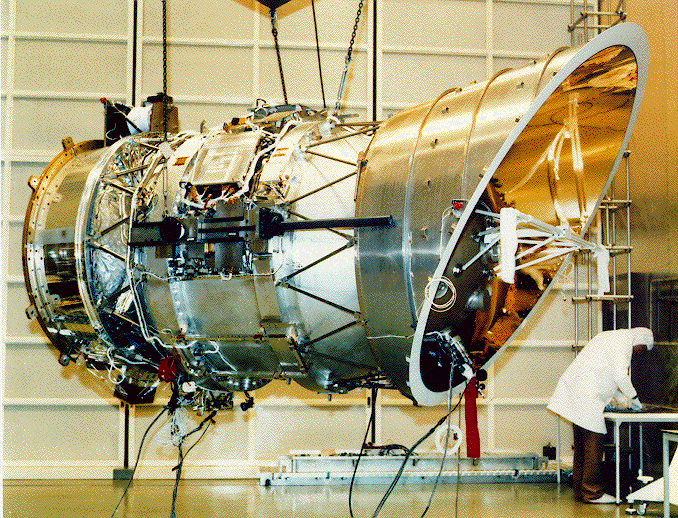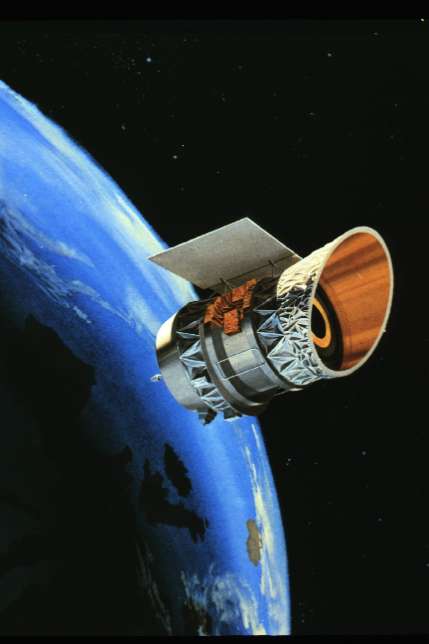

The Infrared Astronomical Satellite (IRAS) was a joint project of the US, UK and the Netherlands. The Low Resolution Spectrometer (LRS) onboard was built by SRON/LEA. IRAS performed an unbiased, sensitive all-sky survey at 12, 25, 60 and 100 µm. About 350,000 infrared sources were detected. IRAS discoveries included a disk of dust grains around the star Vega, six new comets, and very strong infrared emission from interacting galaxies as well as wisps of warm dust called infrared cirrus which could be found in almost every direction of space. IRAS also revealed for the first time the core of the Milky Way. The satellite design and survey strategy were optimized for maximally reliable detection of point sources. Pointed observations, known as Additional Observations or AOs, were also done, interspersed with the survey observations. Although IRAS was not built with imaging primarily in mind, IRAS images have proven remarkable.
The Low Resolution Spectrometer (LRS)
The Low Resolution Spectrometer (LRS) built by SRON/LEA was a slitless spectrometer sensitive from 7.5 to 23 µm with a spectral resolution ranging from 20 to 60. Also the chopped photometric channel (CPC) was provided by LEA. The spectrometer operated during the entire survey, providing spectra for the brighter (point) sources.
Because the survey function required a passive instrument, a slitless design was selected. This design is equivalent to an objective prism spectrograph, oriented in such a way that the dispersion was aligned with the scan direction. Obvious penalties of this design are a degraded resolution for extended objects, sensitivity to spatial confusion, and short integration times.
For all point sources brighter than a certain limit the LRS spectrum was extracted automatically. Due to the objective prism characteristics of the LRS, however, a spectrum could be extracted at any given position of the sky. This was useful for sources which just failed the criteria of the catalog.


